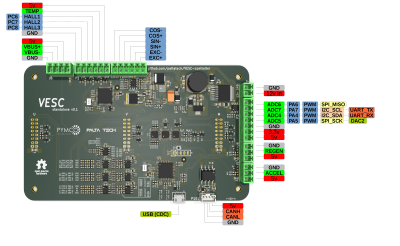There’s something oddly menacing about some vacuum tubes. The glass, the glowing filaments, the strange metal grids and wires suspended within – all those lead to a mysterious sci-fi look and the feeling that strange things are happening in there.
Add in a little high voltage and a tube that makes its own hydrogen, and you’ve got something extra scary. This hydrogen thyratron ended up being just the thing for [Kerry Wong]’s high-voltage, high-current experiments. One would normally turn to the solid-state version of the thyratron, the silicon controlled rectifier (SCR), to switch such voltages. But the devices needed to handle the 30 amps [Kerry] had in mind were exorbitant, and when the IGBTs he used as a substitute proved a little too fragile he turned to the Russian surplus market for help. There he found a TGI1-50/5 hydrogen thyratron, a tube that has a small hydrogen gas generator inside – thyratrons are actually gas-filled rather than vacuum tubes and switch heavy currents through plasma conduction. [Kerry] set up a demo circuit with a small RC network to provide the fast switching pulse preferred by the thyratron, and proceeded to run 3500 volts through a couple of 1/4-W resistors with predictable results. The video below shows the fireworks.
Can’t get enough of the thyratron’s lovely purple glow? We’ve seen it before on this beautiful old switch-mode power supply. The versatile tubes also helped rebuild the first vocal encryption system.



 While [Vedder]’s controller is aimed at low power applications such as skate board motors, [Marcos]’s version amps it up several notches. It uses 600 V 600 A IGBT modules and 460 A current sensors capable of powering BLDC motors up to 150 kW. Since the control logic is seperated from the gate drivers and IGBT’s, it’s possible to adapt it for high power applications. All design files are available on the
While [Vedder]’s controller is aimed at low power applications such as skate board motors, [Marcos]’s version amps it up several notches. It uses 600 V 600 A IGBT modules and 460 A current sensors capable of powering BLDC motors up to 150 kW. Since the control logic is seperated from the gate drivers and IGBT’s, it’s possible to adapt it for high power applications. All design files are available on the 









